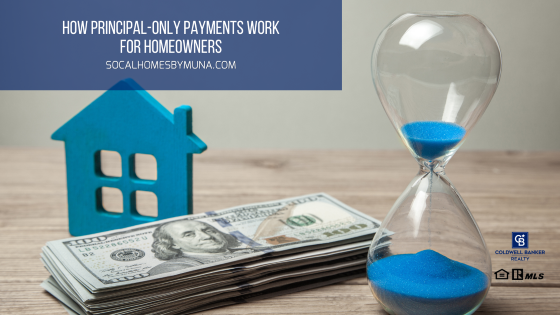Home Selling Tips for a Changing Market

Like much of the rest of the country, the Riverside real estate market really flourished over the last couple of years. We saw double-digit increases in home prices. Unfortunately for sellers, the market has cooled off a bit over the past few months. Multiple offers and same-day-as-listed sales appear to be thing of the past. Even so, anyone who bought their Inland Empire home pre-pandemic may still own a nice chunk of equity in their properties. So, putting your home on the market is still a profitable enterprise. Here are a few home-selling tips that you might want to consider as our market changes from the seller’s favor to a more balanced market (tipping toward the buyer’s favor).
Home Selling Tips for a Changing Market
Buy Down Buyer’s Interest Rate
Interest rates rose above 7% for the first time in over 20 years. It looks like they may even climb higher. This may restrict home buyers’ budgets. As the seller, you may consider offering to pay down the buyer’s interest rate to make it a little more affordable for them to buy your home. This can either be done through a credit or by paying points at closing. The amount each point costs varies per lender. But it usually costs 1% of the total mortgage. Each point typically lowers the interest rate by 0.25%. On a $500,000 home, a point could cost you $5000. However, that is a small price to pay to get your home sold more quickly.
Price Reduction
One of the most important things any seller should focus on is setting an appropriate price when initially listing your property. That is especially true when home selling in today’s transitioning market. But if you find your house sitting on the market for a couple of weeks with no buyer interest, you might want to consider reducing your price. To spark renewed interest in your listing, there are two trains of thought. First, make a statement with a 5% drop. This may be enough for spur interest from multiple buyers. Or perform a “micro drop” (1% every couple of weeks or so). Some buyers look for recent price changes because this may indicate that the seller is more eager to negotiate with them. Talk to your real estate agent to determine which option works best for your property.
Sweeten the Pot
With everyone feeling the crimp in their budgets nowadays, anything you can do to lessen a buyer’s costs once they move in may help motivate them to seal the deal. For example, offer to replace your worn-out roof or almost out-of-date HVAC system before closing. At the very least, offer a credit at closing equal to the cost of replacement. Ask your agent to find out if the buyer was interested in specific artwork, furniture, or other items that you would be willing to part with. Sometimes, even throwing in your riding lawnmower might be enough to make a buyer sign a contract with you.
Pay for a Home Warranty
Finally, offer to pay for a home warranty. Gas. Groceries. Utilities. The cost of everything has gone up recently. Bring peace of mind for your buyer (and a sales contract) to the table with a home warranty. Forbes says that a mid-tier home warranty in California costs about $540 a year (or $45 per month). You (the seller) pay for the first year and then the new buyer can opt to pay for it after that or just let it expire. It is completely transferrable to the new owner upon closing.
These are just a few home-selling tips that may help you secure a sale during this changing market. When you are ready to list your property, contact me. I’d love to discuss how we can turn a “for sale” sign into “sold”.
Muna Dionne, your Inland Empire specialist with Coldwell Banker Realty
How Principal-Only Payments Work for Homeowners

Congratulations on buying an Inland Empire home. Now that you’ve settled in, let’s talk terms. When you signed your mortgage loan papers, your lender provided you with a breakdown of your monthly payment. It includes your principal and interest. At the beginning of your loan, most of your payment goes towards your interest with little going towards your principal. But many lenders allow you to make extra payments that help you pay down your principal faster. These are called “principal-only payments” and will save you tens of thousands of dollars in interest over the life of your loan.
Principal-Only Payments
As the name suggests, these payments get directly applied to your principal (the amount of the loan you took out). You still need to make your regular monthly payment. For principal-only payments, contact your lender first. They usually want you to make a completely separate payment that you designate to be applied only to your principal. Sometimes, if you do not make this distinction, your extra payment may just be applied to the next month’s payment (which goes to the principal and interest instead of just the principal). That defeats the whole purpose of making that extra payment.
How Does This Help?
When you take out a mortgage loan, it starts up the amortization process. This determines how much of each payment gets applied to the principal and how much goes to interest. The interest applied is determined by your principal. So, if you reduce your principal, you reduce the amount of interest applied. Plus, reducing your principal ahead of schedule also gets your loan paid off faster. Additionally, it helps increase your equity.
Weighing the Pros and Cons
Saving tons of money in interest. Paying off your Inland Empire home faster. Getting to use that money to pay off other debts or invest it. All of that sounds fantastic, right? It is! But you need to know the possible downsides of principal-only payments as well.
Some lenders charge a significant pre-payment penalty. Also, some lenders charge a fee to process extra payments. Check your paperwork or ask your lender about this before making any extra payments. Finally, that money you set aside for paying down your mortgage loan cannot be used for anything else…like paying off other debt right now. Instead, you must wait until later to have the extra cash to pay off your current debt. Weigh these pros and cons carefully before you decide to make any additional payments. You do not want to put yourself in a worse financial situation because of it.
Muna Dionne, your Inland Empire specialist with Coldwell Banker Realty
Kitchen Updates for the Budget-Conscious Home Seller

We are smack dab in the middle of the holiday season right now. Fortunately, you can still decorate (with a bit of restraint) even when you try to sell your home during the holidays. However, you need to let your home shine through those decorations. Overwhelmingly, today’s buyers put an updated kitchen and bathrooms at the top of their list. So, before you list your property, consider making some of these kitchen updates that won’t break the bank.
Kitchen Updates for the Budget-Conscious Home Seller
Stash the Stuff
Clear counters make them (and your kitchen in general) look much larger. It also gives the impression that your kitchen includes tons of storage. Remove items from your cabinets that you do not use on a regular basis. Pack them away. Then, neatly place your blender, toaster, spices, etc. inside the cabinets. This allows easy access when you need them but clears the counters for when buyers come looking.
Keep Counters Clean
Another one of the “kitchen updates” that actually cost you nothing to perform. Seems like a no-brainer, right? But you might be surprised how many sellers forget this simple step. Buyers like to run their hands over surfaces. You don’t want sticky, stain-filled counters to be the impression they are left with.
Easy Island Solution
Extra prep space in a kitchen always impresses. But, adding a permanent kitchen island typically costs between $3000 and $5000. For the budget-conscious home seller and for those with smaller kitchens, add a butcher-block counter on wheels. This allows the homeowner to wheel it out when they need it and then tuck it away when they are done.
Add Light
No one likes a dark room, especially in the kitchen. And if your kitchen includes those old fluorescent lights popular in the 80s, it is definitely time for an update. Replace those with nice pendant lighting over an island. Or add flush-mounted or recessed lighting in their place. Under cabinet lights also add extra lighting directly where you need it, on your countertop workspace.
Update the Appliances
Today’s home buyers also like to see energy-efficient appliances. That includes the refrigerator, stove, and dishwasher. If your appliances belong in a museum, you need to replace them. Fortunately, many companies offer great sales at this time of year. So, you may even score yourself a discount for these kitchen updates.
Fix the Flooring
Old linoleum. Broken tiles. Torn vinyl. Our kitchens see a lot of traffic. Because of that, our floors take a beating. But you do not need to spend an arm and a leg to make your kitchen floors look great. Check out options at your local big box store. While installation can oftentimes be done by a homeowner, pay a little extra for the pros if you do not feel up to the task. You want your floors to look their best.
Add Some Green to Get More Green
Finally, add a few plants here and there for a nice finishing touch. A window herb garden provides wonderful smells, adding another subconscious layer of “buy me” to your decor.
Muna Dionne, your Inland Empire specialist with Coldwell Banker Realty


 Facebook
Facebook
 X
X
 Pinterest
Pinterest
 Copy Link
Copy Link






